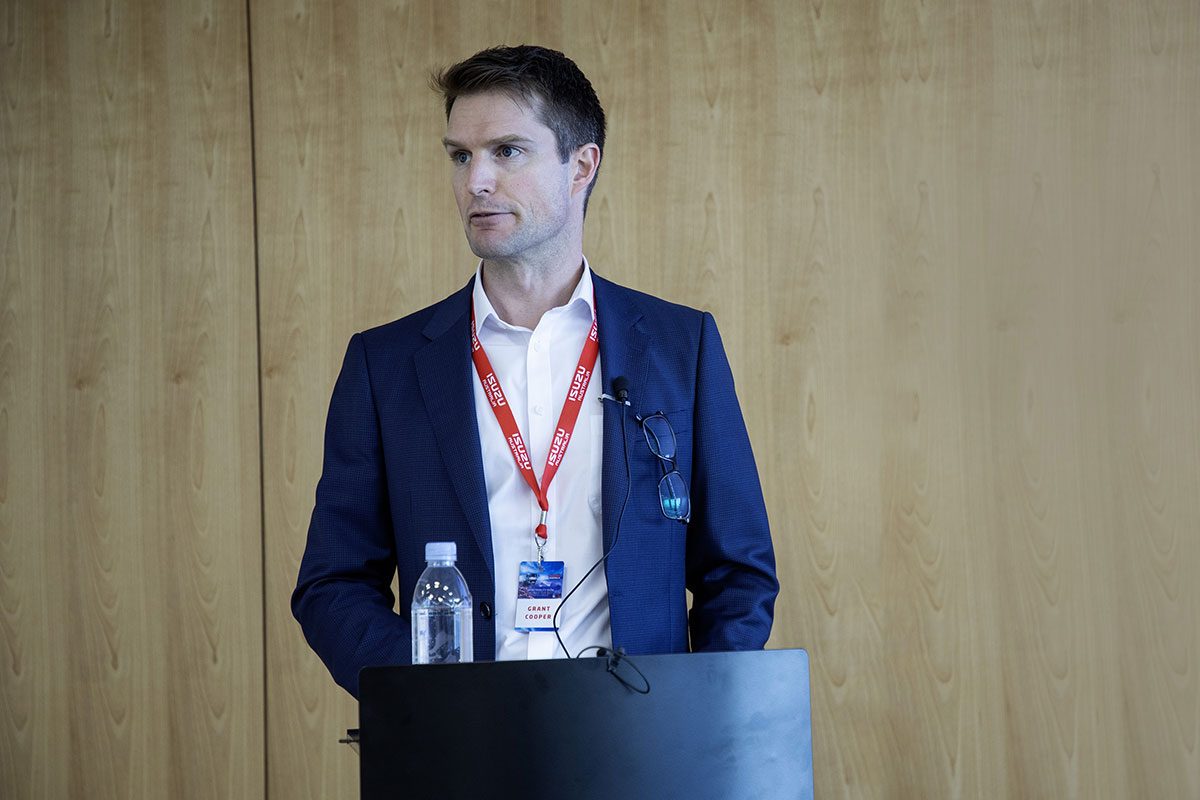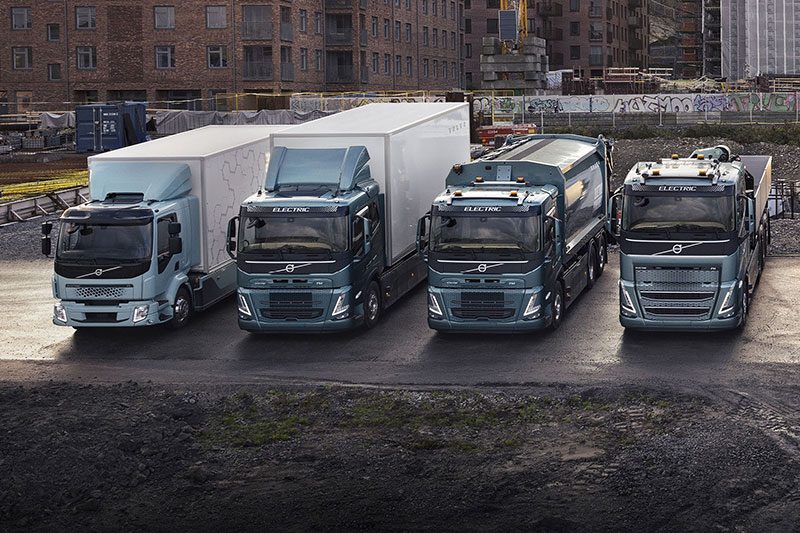Speaking to press at the Freightliner Cascadia launch in Sydney recently, Daimler Truck AG boss Martin Daum was happy to take questions on broader subject matter.

Photo: Chairman of the board of management Daimler Truck AG, Martin Daum, speaks to the big global questions as part of his trip down under for Cascadia‘s launch.
There‘s an old adage in life and business about never forgetting your roots, and always remaining nimble. They‘re both easy to neglect and the price for doing so can be catastrophic, as demonstrated by the information revolution that left some household names looking like a flyblown buffalo carcass on the side of the Barkly Highway. Observing that happen has been of huge benefit to the automotive industry‘s established OEMs, who have acknowledged their potential fragility in the face of upstarts attempting to whip their legs off at the neck while they sleep. Even today‘s giants have their origins in a tinkerer‘s garage a century or more ago and so innovation, stealth, and nimbleness shouldn‘t be absent in their stem cell DNA. ‘Today‘ is not about fortune; today is about fronting up at the start line again, and attempting to be here for another century. Even as Daum took questions, Daimler – and Volkswagen Audi for that matter – were announcing significant staff cuts (10,000 in Daimler‘s case and just over 9000 in VA‘s).
Both companies are directing more resources into alternative power and autonomy research and development, and beginning the adaptation to a far less labour-intensive future product offering: EVs are far easier to make than oil burners. One has to be sympathetic to the plight of today‘s OEMs. They have to maintain our mobility while fending off challengers to their thrones, challengers with less responsibility, or reputation. Pulling off that double-act is a tough gig. As one DTNA executive told us, “Flying economy is the norm now”. ‘Platformisation‘ of existing product lines and collaboration as a means to curb costs will only intensify as combustion‘s ember dies also. Bespoke projects sitting in far-off markets (read Argosy Down-Under in Daimler‘s case) that amount to good money being poured after bad have – and will – continue to disappear.

Daimler from the top
“The world could survive without cars, but it could not survive without trucks,” said Martin Daum chairman of the board of management Daimler Truck AG. “One of the most important tools for our current economic society. Without trucks, everything would come to a stop.” “For all who keep the world moving,” is the way Daum describes the purpose of Daimler, a phrase from his podcast series ‘Transportation Matters‘ (Episode #4). He emphasised the importance of what they do in terms of producing a tool for customers, one the customer trusts to put food on the family table. “If we fail, we let them down.” He stressed the importance of developing technology that meets customer demand rather than creating technology and then trying to sell it, and developing technology that‘s easily deployable across the suite of brands, platforms in other words. He referred to it as the truck‘s “genetics”. Local customisation is selected from a global parts bin. Currently Daimler is investing €1.4bn (AU$2.2bn/NZ $2.35bn) per annum into R&D and, according to Daum, you need the combined weight of the three 300,000-vehicle sales regions – North American, Europe, and the rest – to be able to shoulder that (North Korea and Venezuela are the only two countries Daimler don‘t sell into directly).
Part of that spend was last year‘s purchase of US autonomous vehicle systems supplier Torc Robotics, and although Daum announced at CES in Las Vegas last year an aggressive 10-year timeline to a commercially available L4 autonomous truck in the US, he noted that autonomy was a marathon not a sprint. Technical and regulatory development are huge tasks. On the subject of powertrains, he was at pains to emphasise Daimler was agnostic and stressed that batteries and fuel cells were just different ways of getting power in an EV. “A fuel cell truck and battery truck are fairly similar except batteries are replaced by a fuel cell stack. Both in my opinion have their challenges for the future, and both have their rewards. I see them as complementary technology, that it‘s actually the same truck, and so we develop in such a way that we can always take off the battery packs and replace them with a fuel cell. “The fuel cell Canter, which is an eCanter with all but the buffer battery removed and replaced with a fuel cell – I see that as the blueprint for the future”. Staying with eCanter, he said rollout here [Australia largely] was still contingent on the maturity of battery technology and demand from regulators. The latter he clarified by saying the alternative power technology is possible and available now but is still cost prohibitive by a considerable margin compared with diesel.
In terms of competition in the alternative powertrain market he said that when talking trucks, no one is in the “gaining business” phase currently. “Everyone is still in the gaining knowledge phase.” He said the three big pillars of reliability and reach, cost of ownership, and infrastructure still have to be solved. “EV and fuel cells are more expensive and there has to be a framework that supports them. Batteries and fuel stacks require more length to house the tanks and batteries. Difficult discussions as many roads are not set up for increased size.” Neither did he mince words around the task at hand in terms of global sustainability. “The Paris agreement means that by 2050 we don‘t have any combustion engines any more in any road mobility. We have to get there by 2050. That‘s 30 years. Thirty years ago I was already working at Daimler. It‘s changed a lot but nothing like that. We have young people with us now who will see that change.”
Read more
Road to Zero Isuzu styles
0 Comments6 Minutes
Ready for the harvest
0 Comments12 Minutes
VGA introduces electric
0 Comments8 Minutes
Celling’ the future
0 Comments14 Minutes





